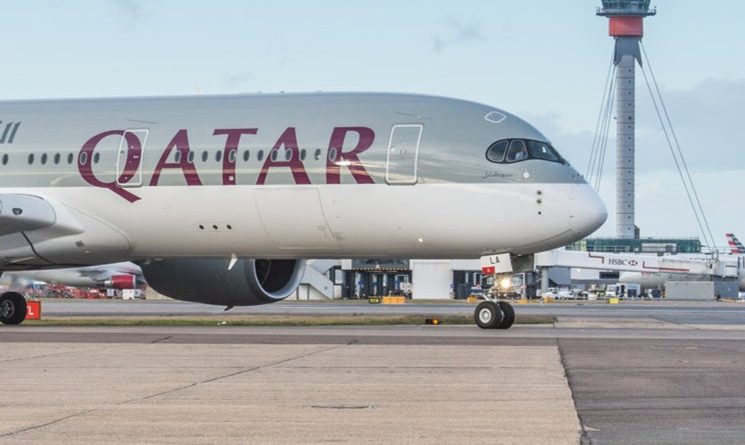End of Qatar air blockade opens up flying in the Gulf
Three years after Saudi Arabia and its allies in the Middle East began a blockade of Qatar, the conflict has been resolved – which means a return to relative normality for airlines in the region.
But what does it mean for visitors and those travelling around the region?
These are the key questions and answers.
What was the Qatar blockade?
In July 2017, Saudi Arabia, Bahrain, Egypt and the United Arab Emirates cut military and diplomatic ties with Qatar, alleging the country had been supporting extremist groups.
Qatar rejected the accusations and has been seeking legal options to overturn the blockade. The agreement is likely to have seen those lawsuits dropped in return for the four countries normalising relations with Qatar – which says the blockade has cost it $5bn (£3.7bn).
How the blockade affected air travel
The nations banned Qatar Airways from flying in their airspace, which – because of the geography of the region – meant that many flight paths became extremely convoluted. Reports say that the carrier paid $100m (£74m) to Iran each year to use its airspace.
For example, the flight from Doha to Johannesburg, southwest of Qatar, had to begin by flying northeast towards Iran to avoid Saudi Arabia, then turning east to fly over the tip of the Arabian peninsula – to detour around UAE airspace – before finally pointing in the right direction.
INDY/GO Weekly Newsletter
TIME TO TRAVEL!
Read our full mailing list consent terms here
INDY/GO Weekly Newsletter
TIME TO TRAVEL!
Read our full mailing list consent terms here
Many other routes, including to the UK, were affected because of pressure on airways – routes assigned to aircraft – in the region. This was particularly acute after the Iranian accidental shoot-down of a Ukrainian passenger plane a year ago, after which many airlines diverted to avoid Iran.
Thousands of other services have flown millions of extra miles to circumvent the airspace ban.
In addition, of course, there have been no links between any of the countries and Qatar.
The last flight between the two Middle Eastern mega-hubs, Doha and Dubai, took off 208 weeks ago. Since then, there have been no services.
Some of the grounded Qatar Airways planes were seen at London Heathrow. The carrier is a substantial investor in British Airways’ parent company, IAG, and loaned aircraft and crew to operate European flights during a pilots’ strike.
When will flights resume – and at what scale?
It is not clear. The Emirates website does not currently recognise “Doha,” let alone sell flights from its hub in Dubai. The same applies on the Qatar Airways when searching for Dubai as well as Bahrain and the two key Saudi Arabian cities of Riyadh and Jeddah. While Cairo is recognised, some roundabout routings are proposed, including via Beirut and Amman.
Watch more
When they are scheduled, services are likely to be at a much smaller scale than before, when there were up to 20 flights each way between Doha and Dubai, making it the busiest route in the region.
The coronavirus pandemic has intervened, and travel patterns have changed.
What does it mean for travellers?
For passengers on the Qatar Airways flights that have faced detours of many hundreds of miles, journeys will be much more agreeable. There will also be a saving in cost in dollars for the airline and in carbon emissions for the planet.
Some of the cost-savings may feed through to lower fares, but as with much of the world, the general trend is for reduced services and higher prices.
When normality resumes to the Gulf and the rest of the world, there are likely to be substantially fewer flights because of the general downturn in demand for air travel.
Qatar Airways may also decide to reduced some of its marginal services – which include Birmingham and Cardiff to Doha – and redeploy aircraft on regional flights to serve newly restored links.
More positively, restoration of intra-Gulf links should feed through to lower fares for travellers who don’t mind changing planes en route: Emirates is likely to start undercutting nonstop UK-Doha flights with connections in Dubai, and conversely Qatar Airways will do the same with UK-Dubai services, offering a transfer in Doha.
What about the World Cup?
Qatar is the controversial host of the 2022 global football tournament, which takes place in the country from 21 November to 18 December.
One big problem facing the organisers has now been resolved. With limited hotel space in Qatar itself, many fans had planned to base themselves in other Gulf locations – primarily Dubai – and fly in for the matches. That will now be feasible again.
Any other significant aviation changes in the Gulf region?
The most remarkable development for many years has been the normalisation of relations between Israel and the Gulf nations. Scheduled flights are now operating routinely over Saudi airspace connecting Tel Aviv with Dubai, on the Israeli carriers Arkia and El Al as well as Flydubai of the UAE.
Source: Read Full Article




